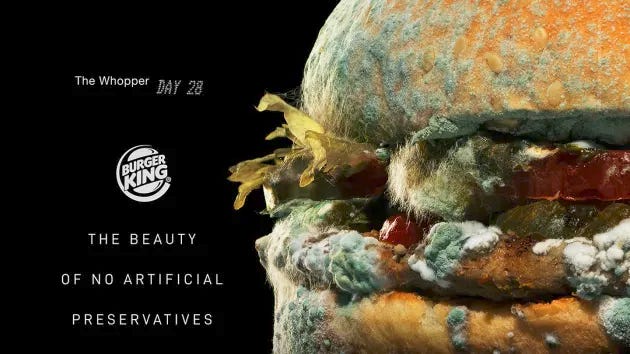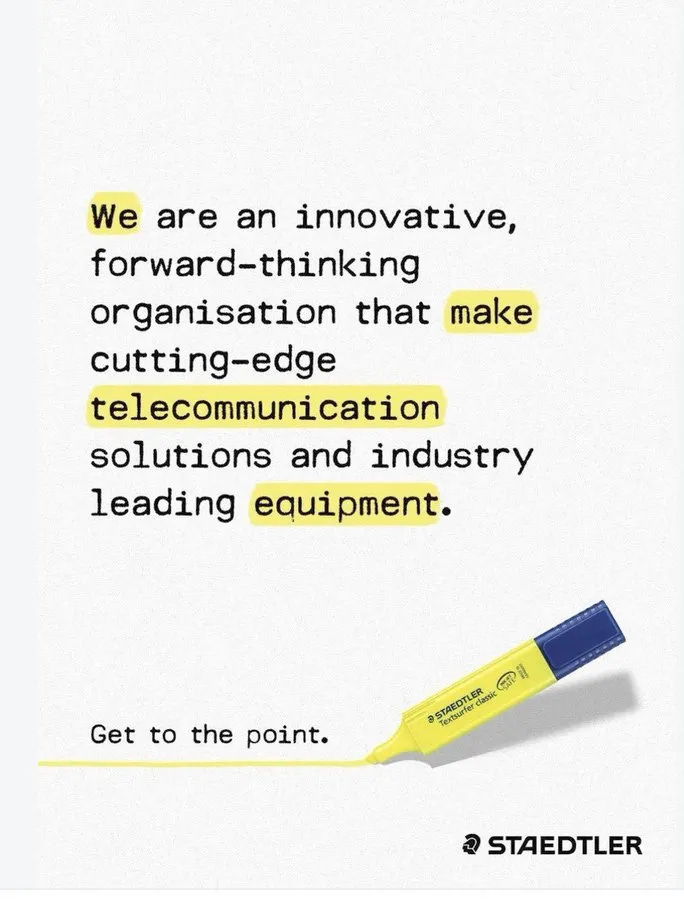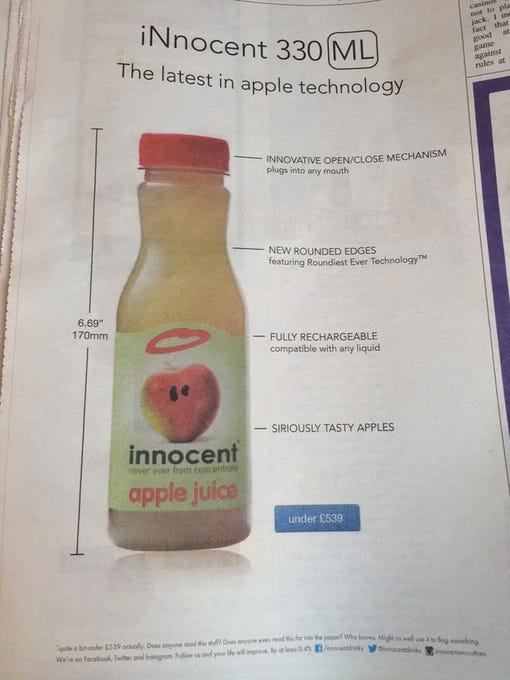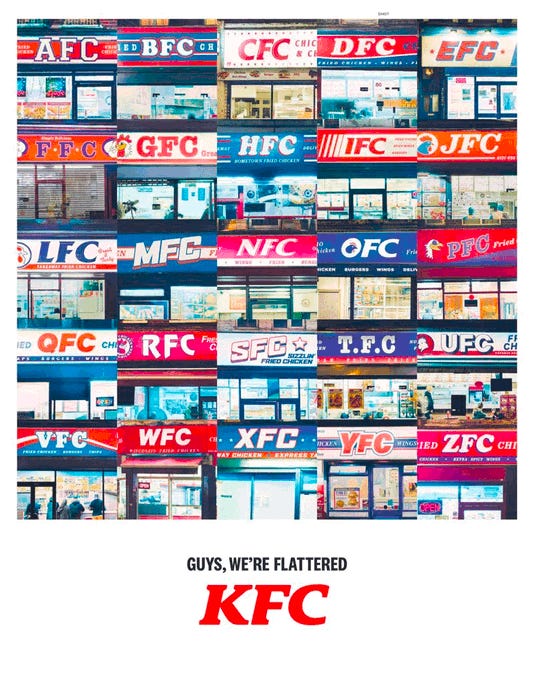What 5 insane ads taught me about great marketing
This one has moldy burgers in it 🍔
Some ads make you cry.
Some ads make you laugh.
Some ads make you wonder if the marketing team spent their budget on expired cough syrup and a dare.
…and then there are some ads so bizarre, so brilliantly unhinged, you can’t stop thinking about them.
This weekend, I spent 4+ hours researching marketing campaigns that broke every rule on purpose.
And emerged with 5 worth sharing.
These are precision-engineered masterclasses in breaking patterns, hijacking attention, and making your brand impossible to ignore.
If you’re a founder, creator, or writer, there’s a LOT you can steal here.
1. BurgerKing “Moldy Whopper”
It’s just a Whopper. Sitting there.
…for 34 days…
And they filmed the whole thing, time-lapse style, as it rotted.
I’m talking green fuzz, collapsing lettuce, bun turning into a science experiment. The kind of image that makes you physically lean back from your phone.
You can almost smell it 🤢
And then the headline drops: “The beauty of no artificial preservatives.”
Pure disgust is the genius.
Most fast food marketing is a lie. Burgers in commercials are painted, pinned, and Photoshopped within an inch of their lives.
Burger King said, “Yeah, ours gets gross. That’s called real food.”
~
🧪 How you can use this tomorrow:
Lead with the unpolished. If you’re a coach, show the messy whiteboard, not the finished PDF.
Flip your “weakness” into proof. (Guinness – “Good Things Come to Those Who Wait”)
Go where no one else will. Show what’s least expected in your niche.
2. Staedtler Highlighter “Get to the point”
This is what happens when a company steps back and asks:
What do we do?
What do we do well?
What do we do better than anyone else?
For Staedtler, the answer was simple: We highlight things.
In a magazine full of busy ads, you hit a nearly blank page, just a line of neon yellow pulling your eyes straight to the most important words.
That’s what highlighters do. They get to the point.
The brilliance here is in the simplicity. No long copy about ink quality, no bullet points about smudge resistance. Just the result of the product, doing its job right in front of you.
~
🧪 How you can use this tomorrow:
Show, don’t tell. Show the result, not the process. A baker doesn’t need to explain the oven, just show the bread breaking open.
Strip away everything but the core. If you could only show one thing about what you do, what would make people instantly understand?
Make it universally clear. If your ad was dropped in front of someone halfway across the world, could they “get it” without reading a word?
3. Innocent “iNnocent”
The next is called borrowed equity—a marketing move where you tap into the trust, familiarity, and recognition of something people ALREADY know.
Everyone knows Apple Inc.
The clean white backgrounds. The minimal product shots. The impossibly precise typography. The “this product will change your life” confidence.
So Innocent—a fruit juice company—dropped an ad styled exactly like an Apple launch. Except instead of the iPhone 12, it’s a bottle of apple juice.
And a little detail I don’t want you to miss, the “under £539” button, which is the most hilarious part of the Ad.
~
🧪 How you can use this tomorrow:
Borrow equity from a giant. Take a well-known brand, visual style, or cultural moment, and reframe it for your offer.
Use the “It’s like X, but Y” formula. “It’s like Uber, but for dog walkers.” “It’s like Shark Tank, but for church projects.”
Leverage the jolt. Make people think they know what’s coming, then deliver something totally different, but relevant to your product.
4. KFC “The Copycats”
What do you do when somebody copies your idea?
You sue them.
What do you do when you see hundreds of copycats?
You showcase it.
Everybody knows knock-offs.
Fake Rolexes in street markets. “Adibas” sneakers on Amazon. And if you’ve traveled, you’ve probably seen the KFC knock-offs—same red bucket, same three letters, same smiling “colonel” that looks suspiciously like your neighbor’s uncle.
But KFC didn’t send cease-and-desists.
They leaned in.
~
🧪 How you can use this tomorrow:
Creators: Share the “copycat” ideas or formats people have swiped from you, and use them to reinforce your original.
Brands: If competitors mimic your features or style, make it part of your story. (“Others try. We’ve perfected it.”)
Principle: If someone else’s attempt can point back to you, let it. That’s borrowed credibility at zero cost.
5. Nike “Just do it”
I had to save the best for last.
Just three words.
Launched in 1988, “Just Do It” became so much more than about shoes.
It was about you.
Nike could’ve gone with something safe. Something broad like “Better Performance” or “Run Farther.”
Instead, they handed the world a personal dare. It wasn’t even aimed at athletes; it was aimed at the person sitting on the couch, thinking about doing something hard.
The genius is in its universality:
A kid nervous before their first piano recital?
Just do it.
A founder debating whether to launch?
Just do it.
A retiree lacing up sneakers for their first 5K?
Just do it.
The results —> Nike sales went from $877M to $9.2B in a decade. But more than revenue, they created a cultural mantra.
People tattoo it, hashtag it, live by it, even if they’ve never owned Nikes.
~
🧪 How you can use this tomorrow:
Create a memorable phrase. Instead of describing your product, give your audience words they want to live by. (E.g., a writing coach: “Write Anyway.” A fitness app: “One More Rep.”)
Make it bigger than your product. Your message should work even if someone removes your logo.
Pair it with a visual cue. Think “swoosh-level” simplicity—a single image or icon people will connect to your brand instinctively.
Why This Matters for Christian Creators
I love studying campaigns like these because they prove creativity works best when it’s clever and practical.
The kind that takes tools, trends, and cultural moments, then bends them toward a message no one can ignore.
Good marketing. Bad marketing. Grotesque marketing. Beautiful marketing.
Whether we notice it or not, marketing is rewiring how we think, what we value, and what we do.
If the world is going to use that power to sell what’s hollow, we’d better get just as creative at using it to point people toward what’s whole.
Because the truth is, you can’t out-shout the noise.
You have to out-think it.
That’s why I geek out over moldy burgers, fake colonels, and juice brands pretending to be iPhones because they remind me that ideas don’t have to be loud to be heard. They have to be sharp.
So study the way the world wins attention. Reverse-engineer it.
Then aim it at the Kingdom like a laser.
MY BEST FINDS
I scoured the internet, and here are the best things I could find this week. If you find something worth sharing with the rest of the Lab, reply to this email!
🧙♂️ Story
The science of surprise and how to make it work for you and your brain (Melissa Hughes)
A simple framework to write better AI prompts. Just like storytelling, there is an art and science to it (LinkedIn)
LinkedIn and Email growth hacks that are embarrassingly simple (YouTube).
The 1k challenge: How to get your first 1,000 newsletter subscribers in 30 days (Newsletter Operator)
7 of the best lead magnet & newsletter landing pages (LinkedIn)
💡 Marketing
I found other really cool marketing tricks online for you. (Here) (Here) & (Here)
I found a newsletter that sends out a weekly marketing roundup. I haven’t seen it long enough to have a strong opinion, but I’ll still share (Because of Marketing)
👀 ICYMI
3 techniques you can swipe to 10x your writing immediately (Christian Story Lab)
Christian Story Lab made a BIG shift to Substack this week, and I share all the deets on why I did it. (LinkedIn)
~
Keep writing what matters,
— Payton
P.S. If there a fellow writer, copywriter, marketer in your orbit who would benefit from these emails, here is a fancy button to click 👇








This was an insightful read!
Thank you so much.